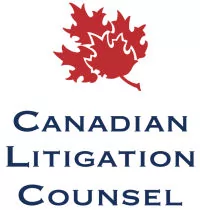- within Cannabis & Hemp topic(s)
- with Senior Company Executives, HR and Finance and Tax Executives
- with readers working within the Automotive, Business & Consumer Services and Insurance industries
The Supreme Court of Canada dismissed leave to appeal, mid-February 2020, from an important 2019 Alberta Court of Appeal case: Condo Corporation No. 0410106 v. Medicine Hat (City) ("Medicine Hat"). The issue in Medicine Hat was municipal responsibility to provide, operate, and maintain utility infrastructure designed to service more than one parcel, and located on private lands. The City and the developer had previously agreed that the ownership of the infrastructure, and duty to operate and maintain, would remain with the developer, then ultimately the landowners. Written agreements to that effect had been made. The Court of Appeal held that as a result of the duties imposed under the Municipal Government Act (the "MGA"), the Municipality must take over ownership, operation and maintenance of the infrastructure. Notably, the Municipality had to incur upgrades of approximately $1.2 million to bring the infrastructure into the municipal system.
Case Summary
The decision in Medicine Hat clarifies Alberta law on the line between municipal and private responsibility for utilities located on private lands, but designed to serve more than one parcel, as follows:
1. "Main Line": Utility infrastructure that runs between parcels of land, and is specifically designed to serve an entire development as a whole, and not only the individual parcel on which it sits, is both functionally and legally a "main line" because its purpose is to transmit public utilities across the development, from one parcel to another.
2. "Service Connection": Only those parts of the utility system that branch off from the main lines to supply service within one individual parcel are true service connections. If parts of a utility system are designed to serve more than one parcel, this function does not fit the definition of "service connection" under the MGA.
3. Public Utilities Services Should Not Depend on Unregulated, Private Agreements:
a. It is not consistent with the language or the purpose of the MGA to require that the owner of one parcel be responsible for the utility service provided to another parcel, nor, conversely, to expect the owner of one parcel to rely on the owner of another parcel for its utility service.
b. Section 34 of the MGA specifies that a municipality, not a nearby landowner, is to provide municipal utility service to a parcel of land, unless the municipality has granted that right to a third party in accordance with section 45 of the MGA.
c. As a result of the duty created by MGA section 34 and the process established by MGA section 45, a municipality may only contract out of the duty to operate a public utility where the contract has been subject to public scrutiny and regulatory oversight by the Alberta Utilities Commission.
Key Takeaways and Best Practices
Medicine Hat could be applied to any part of utility (not roads) infrastructure that provides service to more than one parcel (including the common case of "secondary servicing"), or potentially to any situation where municipal connection is indirect
(e.g. where easement over a neighbour's lands is required to
connect to a municipal main line). The full impact of
the
principles established by Medicine Hat may not be clear
for many years, in terms of the limits of where they may apply.
Overall, what is clear is that caution and legal review are recommended in any scenario proposing private servicing arrangements involving multiple parcels. Municipalities should plan to take ownership of all water, storm, and sanitary utility infrastructure that serves multiple parcels, or plan to have a proper and fully approved franchise agreement under MGA, s. 45 in place. In either event, municipalities should require all utility facilities servicing more than one parcel to be constructed to municipal standards (or standards that the municipality is comfortable taking-over). This may well result in additional costs to, or complexities for, developers. However, Medicine Hat shows that this is due to Alberta law, not merely municipal preference.
The following best practices are recommended to save administrative time and costs, and help mitigate future disputes and liability exposure:
1. Focus on Potential Proposed Parcels, Not Current Ownership: Carefully review new subdivision and development proposals to determine whether any portion of the infrastructure will now, or is likely to in future, service more than one privately held parcel of land. Regardless of who now owns the lands and their current willingness to share servicing responsibilities, plan for future sales, transfers, bankruptcies, etc. Ideally, long-range plan for subdivision/ development in parallel with a desired servicing strategy (e.g. in statutory plans, conceptual schemes, land use bylaw, etc.).
2. Exceptions Should be Limited and "Shored-Up": Wherever possible, ensure that the utilities for each parcel of land directly connect to the municipal system. Avoid intervening parcels (titles) or utilities arrangements that rely on mere easements. Where small-scale exceptions are unavoidable, at the time of subdivision or development permit applications, require municipal standard construction and municipal utility right-of-way, not just private landowner-landowner easements.
3. Require Compatible Municipal Standards: Require that all new utility infrastructure is built in accordance with municipal standards and specifications regardless of whether there will be a shared servicing network located on or under a privately owned parcel.
4. Standardize Inspection, Completion Processes: Prior to confirming or accepting completion of infrastructure that may connect to the municipal system, now or in future, ensure proper construction to municipal standards, through a standardized municipal process of inspection and review of 'as built' plans and surveys.
5. Cost Recovery, Benefitting Areas, Offsite Levies: Re-consider existing benefitting areas models, assumptions on upgrading required, service areas, and new or expanded infrastructure needs, in order to support a servicing plan that can rely upon municipal ownership and minimize/avoid potential for private servicing solutions. This is particularly important if the municipality has previously relied on or planned for private servicing solutions for limiting costs.
6. Proposed Multi-Unit Residential/Commercial Development: A multi-unit residential development, or commercial development designed with multiple spaces to be occupied by multiple parties, can be serviced by a single private service connection and private internal distribution/collection system as long as the developments are all within one parcel. Any development over multiple parcels should require consolidation into a single parcel, to preserve the single private service connection and private internal distribution/collection system.
7. Proposed, Larger-scale Bareland Condominium Plans: While Medicine Hat indicates that municipalities will not become responsible for the servicing located within a condominium plan (which is seen as being one "parcel"), this may lead to a false sense of security from a more practical perspective; especially in light of current economic conditions. We suggest that there remains risk in relying upon any condominium board or any home owners' association to actively provide any form of extensive utility services. Risks include that the principles of Medicine Hat could be expanded upon going forward. But the more commonly seen risks are associated with the fact that the volunteer condominium or home owners' association boards are prone to failure or mismanagement, and the potential that the developer fails to properly transfer and turn-over the facilities and responsibilities to the board. As a result, we recommend anticipating or even planning for potential future municipal take-over, and ensuring compatible design and construction standards, plus municipal utility rights of way, at the very least. However, based upon Medicine Hat decision today, municipalities should:
a. Whole service, one parcel: Ensure all elements of the private utility service, other than the final connection point to a municipal main, are located on the same "parcel" as contemplated by the decision and the MGA – i.e. the whole service is within one registered condominium plan (one parcel). Be clear on whether so-called 'phases' are actually separate condominium plans or parcels.
b. Ensure an alternate, regulated utility – e.g. franchise, per MGA s.45: Require servicing via a franchised utility (including under development agreements) where more than one condominium plan will be created over time and the various plans (parcels) will be serviced by shared utilities (e.g. the same lift station, treatment plant, or service line through a main internal road connecting condominium plans).
8. Respecting Existing Shared Servicing or Indirect
Servicing Arrangements: Where shared private
servicing, or indirect servicing already exists:
a. Anticipate potential need
to take over: Take proactive steps, to plan to
improve or replace facilities (e.g. implementing local
improvement plan, bylaw, and tax) with takeover of maintenance,
operation and ownership.
b. Facilitate franchise utility: Proactively prepare
for and guide transition to formal regulated alternatives, such as
implementing a franchise agreement under MGA, s.45.
c. Inspect, audit, budget: Inspect existing private utility infrastructure to determine if it is acceptable, and if not, what cost recovery options may be available for upgrades. Factor upgrades into planning approval conditions, municipal budgeting.
d. Shore-up URW: Explore options to require utility rights of way (URW), or to negotiate URW agreements at a nominal cost, prior to resorting to a costly acquisition process such as expropriation.
e. Disclose: Obtain legal advice regarding recommended disclosures if the municipality is asked to make representations to third parties about utilities costs, operation, ownership (e.g. developer financing, sales of lands with private shared utilities).
Final Comments
In the end, the advice is to use the tools that already exist for municipalities. This includes municipal bylaws, policies, statutory plans, development agreements, etc. Statutory plans can identify areas with constraints to straightforward municipal utilities installation and maintenance. The land use bylaw can reduce listed permitted uses to minimize development that is not traditionally serviceable, and/or to shore-up standards, all to guide subdivision and development approvals and align with statutory plans and infrastructure policies. Development agreements (and where applicable franchise agreements) can implement the servicing solution directed by the bylaws, and planning and municipal approvals. Adjust and coordinate these statutory tools to facilitate the best practices noted in this article, and make them all work for your municipality.
* * *
Brownlee LLP is a member of the Canadian Litigation Counsel, a nationwide affiliation of independent law firms .
The content of this article is intended to provide a general guide to the subject matter. Specialist advice should be sought about your specific circumstances.



